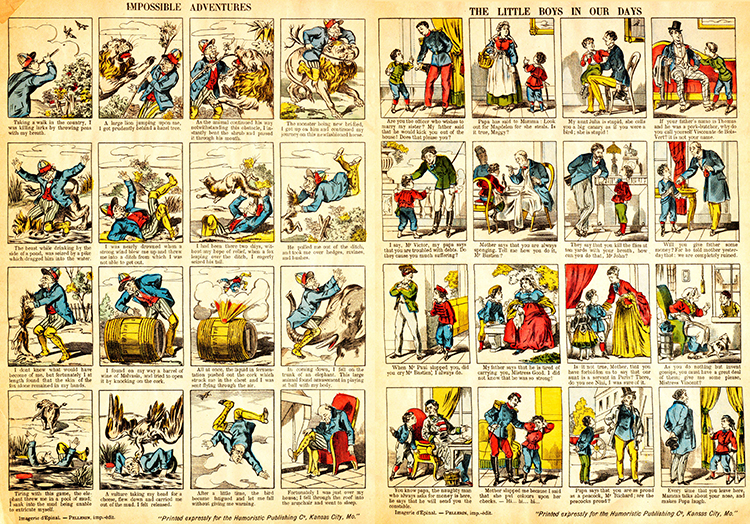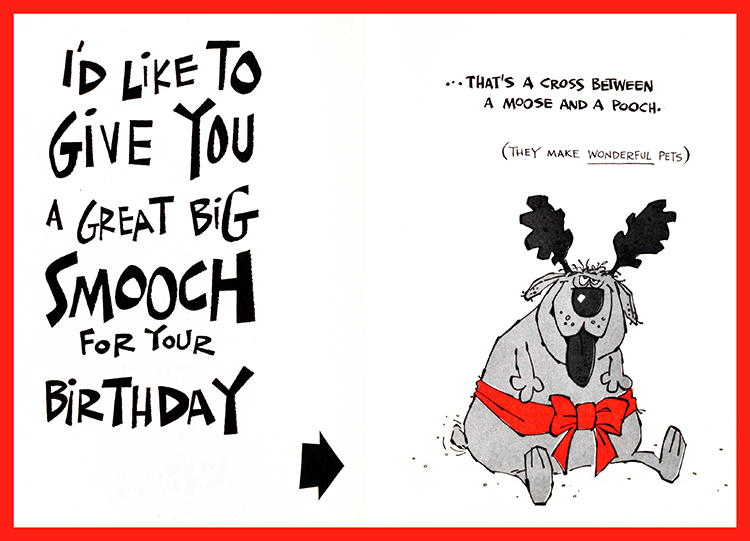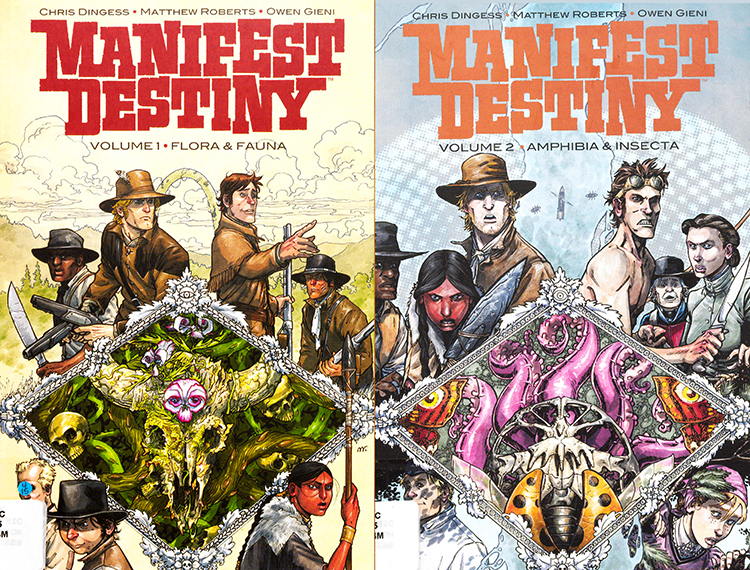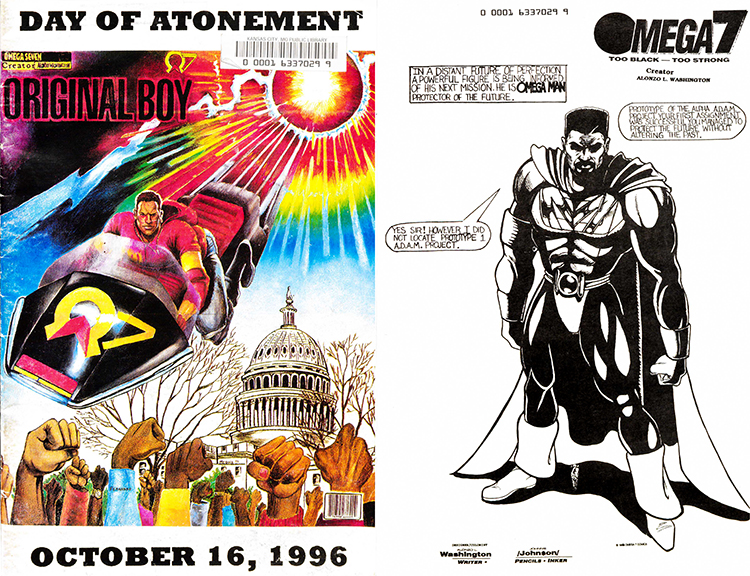It’s easy to say that reading for entertainment has taken a backseat to television and video games in today’s visually driven culture. A popular form of amusement, however, still has the power to capture the imagination of both younger and mature readers — comics.
With Planet Comicon attendees taking over downtown this weekend, it seemed like a good time to highlight some of the comics available to researchers in our Missouri Valley Special Collections at the Central Library.
To begin, let’s establish some parameters of the comics form. Simply put, a comic strip is a group of cartoon images arranged in a narrative sequence. When arranged in book-length sequences, they become graphic novels. Usually targeting niche audiences, zines and mini-comics are typically self-published on a much smaller scale.
All these forms are represented in the library’s holdings, and those found within our special collections tend to be from local publishers, or highlight stories related to the area’s history.
Recently, while working on some small unprocessed collections, our archivists found a collection of 60 “Impossible Adventures” comic sheets printed for the Humoristic Publishing Company of Kansas City, Missouri, in France by the Imagerie d’Épinal publishing house.
There was very little documentation with the collection — just a single letter written in 1963 from a rare book dealer asking if the library would be interested in buying the collection. However, the single entry for the Humoristic Publishing Company located in the 1888 city directory gave us an approximate publication date.

Sheets from "Impossible Adventures" (SC238).
The collection represents how the comic form was developing in the late-19th century and gives us an idea of the types of comics popular in Kansas City at that time. While visually inviting, they unfortunately depict racial stereotypes and caricatures often found in popular forms of entertainment from the period.
The library also collects comics and graphic fiction with much larger print runs. For example, “The Kents,” a 12 issue series published in 1997 by DC Comics documents a strange mingling of Superman’s Kent family ancestors on their farm outside the fictional town of Smallville, Kansas, during the pre-Civil War Bleeding Kansas turmoil.
Artwork from "The Kents" (SC115).
Another title with strong local ties is “The Story of Harry S. Truman,” published in 1948 by the Democratic National Committee. The 16-page issue was an attempt to share his “program to build a better America” with comic reading voters.
Cover of "The Story of Harry S. Truman.
The comic form has also been used to lend a more fanciful lens to historical events, like in the two volume “Manifest Destiny,” published in 2014-2015 by Image Comics. These graphic novels tell the story of the Lewis and Clark expedition but in a Louisiana Territory haunted by zombies, monsters, and other supernatural entities.
Covers of the two volume "Manifest Destiny."
More modern conceptions of comics can be found in our Local Zines, Mini-Comics, and Mail Art Collection. Because zines are self-published, they often represent countercultural and underground groups and carry political or social messages. They don’t always follow a traditional structure, but comic strips are often found within zines.
The collection is open-ended, so additions to it can be made as local zine and mini-comic publishers produce new work. We would love to help document minority social, political, and cultural groups in Kansas City and welcome new donations to the collection so that they can be preserved for future readers.
Cover and artwork from "Day of Atonement."
It may be easy to assume that print zines and mini-comic publishing would have declined over time due to the rise of social media and e-publishing outlets, but their popularity remains strong among devout readers. The Library of Congress has even gotten in on the act, hosting a zine-making workshop at every National Book Festival since 2017.
Zines have remained popular in Kansas City too. In 2014, a group of local enthusiasts held the first Kansas City Zine Con, a one-day festival to celebrate zines and their creators. KC Zine Con 8 is set to take place on June 8, 2023, at Goofball Skate Park in Waldo.
Artwork from a locally published zine.
While it’s true that many of the comics, zines, and graphic novels in our collections are not historically accurate, they’re capable of doing something more traditional historical sources often can’t and shouldn’t be dismissed as research resources. They provide unique insights into differing perspectives of mass culture, individual stories, documentation of alternative communities, and introduce readers to unique interpretations of Kansas City’s history.
ADDITIONAL RESOURCES
Capote in Kansas: A Drawn Novel (2005)
Greetings, Dearie! A Connoisseur's Collection of Humor from Hallmark Contemporary Cards (1962)
Impossible Adventures (SC238)
Kansas City in Caricature (1912)
The Kents Comic Book Collection (SC115)
Local Zines and Mini-Comics Collection (SC96)
Night of the Living Bar-B-Q (1997)






